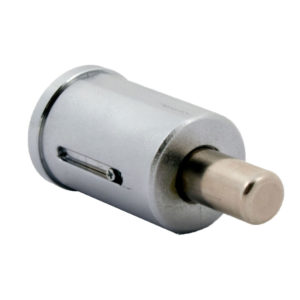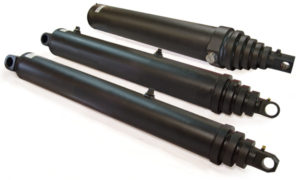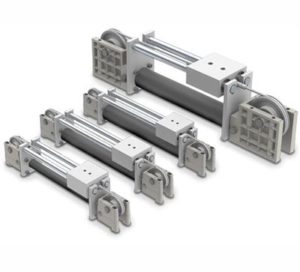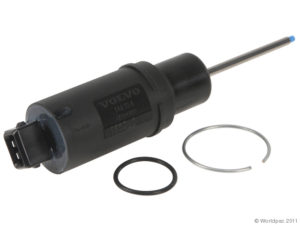Hydraulic cylinders are the components of a hydraulic system that utilize the force stored in the pressurized fluid. The energy held in the pressurized fluid is used to create a linear force on the cylinder. Pistons inside the cylinder house are connected to piston rods. The piston cylinder has a bottom and a head. The head is where the piston rod emerges from the cylinder. The cylinder contains two spaces the piston rod chamber and the bottom chamber. The piston rod is forced out of the piston chamber when pressurized fluid is forced into the bottom chamber. Once the bottom chamber is full and the piston rod has been propelled fully outward the release valve inside the bottom chamber allows the hydraulic fluid to be syphoned back into the fluid reservoir. The four types of hydraulic cylinders and described below.

Plunger: Called “Ram” cylinders in the industry. They utilize gravity to return the piston to its original position pressing fluid via gravity back to the reservoir.

Telescoping: Known as a “multistage” cylinder in the industry. They are commonly used in cranes and forklifts. They can have up to six stages. Each piston rod extends pressing the next rod forward.

Cable: Instead of being attached to a rod the piston head is attached to a cable. This allows for the cable to be routed around bends using pulleys.

Diaphragm: These contain the hydraulic fluid in a flexible bag. The piston head never actually touches the fluid. The bag is filled with pressurized fluid and forces the head forward. When the fluid is drained the piston moves back to its original position.
